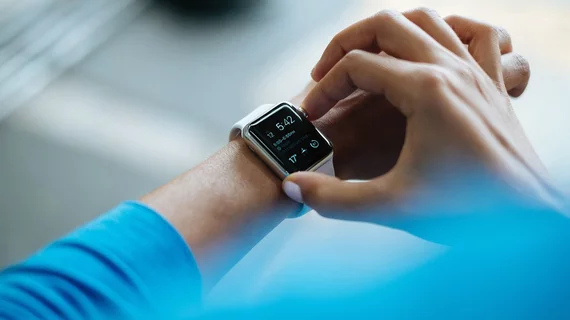What the Apple Heart Study looks like 1 year later
A Stanford- and Apple-led atrial fibrillation study of more than 400,000 U.S. residents—the largest AFib screening effort to date—has entered its final phase of data collection, the company announced Nov. 1. The trial is expected to wrap up early next year.
The Apple Heart Study was launched by officials at Apple and Stanford Medicine last November with the goal of determining whether a smartwatch app that analyzes pulse-rate data could effectively screen for heart rhythm disorders in the general population, according to a statement. More than 400,000 participants enrolled through an iPhone app.
Mintu Turakhia, MD, the principal investigator on the Stanford side of the study, said in a release the trial’s goals were threefold. The team aimed to determine how often the app correctly identified irregular heart rhythm disorders and atrial fibrillation, solidify the accuracy of the watch’s irregular-pulse detection feature and quantify what percentage of patients who receive an irregular heartbeat alert go on to seek medical help.
“We now have access to high-quality sensors that can measure and detect changes in our bodies in entirely new and insightful ways without even needing to go to the doctor, but we need to rigorously evaluate them,” Turakhia said. “There’s never really been a study like this done before.”
All participants in the Apple Heart Study were required to have an Apple Watch series 1, 2 or 3 at the trial’s baseline. While enrollees wear their watches, a connected iPhone app intermittently checks the watch’s heart-rate pulse sensor for measurements of an irregular pulse. If the app detects arrhythmias it perceives to be irregular, the participant receives a notification on their watch.
That notification encourages the user to check their Apple Heart Study app for “an important message about your heart.” From that point, they’re urged to schedule an appointment with a doctor involved in the study, and they’re also sent electrocardiography patches, which researchers are using to corroborate the irregular rhythms picked up by the Apple Watch.
A subset of data from the Apple Heart Study was submitted earlier this year as part of an FDA request to clear two of Apple’s mobile medical apps for concurrent use with the Apple Watch. The study app, which tracks optical sensor data—something that’s been available since the company’s series 1 model—was approved Sept. 11 alongside the now-controversial EKG app featured in the series 4 watch.
The new watch’s EKG abilities have been both lauded and contested by physicians, who worry the feature might prompt unnecessary emotional distress from a slew of false-positives that could overload the country’s emergency rooms. Still, that data won’t be part of the Apple Heart Study.
“We hope this study will help us better understand how wearable technologies can inform precision health,” Lloyd Minor, MD, dean of the Stanford School of Medicine, said in the release. “These new tools, which have the potential to predict, prevent and manage disease, are finally within our reach.”

